Bilirubin
definition
Bilirubin is produced in the human body when hemoglobin is broken down. Hemoglobin is the red pigment in the blood whose main job is to store oxygen in the blood cells. Human blood owes its red color to him. Bilirubin, on the other hand, has a yellowish to brownish color and is lipophilic, i.e. it is readily soluble in fat but poorly soluble in water. As a breakdown product, bilirubin is excreted via the liver into the intestine and finally via the stool. As a laboratory value, bilirubin is therefore primarily determined in the diagnosis of diseases of the liver and biliary tract.

Bilirubin metabolism
Blood cells have a lifespan of around 120 days, after which they are broken down mainly in the spleen. This releases hemoglobin. Hemoglobin consists of a protein component and the Heme group, the actual red blood pigment. The protein content is metabolized in the body in various ways.
Heme, on the other hand, is a ring-shaped molecule that needs its own metabolic pathway for its breakdown. First, the ring structure of the heme is made up of a special protein called Heme oxygenase split. The so-called biliverdin is formed, which is greenish in color. The second step is made by another enzyme, the so-called Biliverdin reductase. It converts biliverdin into the yellowish bilirubin. Bilirubin is poorly soluble in water and must therefore be bound to special proteins such as albumin in the blood. This bilirubin is also known as unconjugated or indirect bilirubin. The next step happens in the liver. Here the bilirubin gets into the liver cells, which it in several intermediate steps Bilirubin diglucuronide convert. This is bilirubin to which Glucuronic acid was bound. This process improves the water solubility of the bilirubin and it can be excreted into the intestine via the biliary tract. It is now called conjugated or direct bilirubin.
You can also read on here: Function of the liver, tasks of the liver
However, that is not quite the end of bilirubin metabolism. In the intestine, bilirubin diglucuronide is further metabolized by bacteria. For example, they are formed from bilirubin Stercobilinwhich is partly responsible for the brownish color of the chair. In addition, some of the excreted bilirubin is reabsorbed, so that a constant circulation is created between the intestine and the liver.
You may also be interested in these topics: bile, bile duct, gall bladder
What does the bilirubin value say?
Bilirubin is produced when red blood cells die. A healthy and freely functioning liver and bile are necessary for its breakdown. Changes in these areas also lead to changes in bilirubin levels. It is important to distinguish between indirect and direct bilirubin.
Indirect bilirubin is further metabolized into direct bilirubin in the liver. Depending on which of the two values increases, the location of possible damage can therefore be precisely determined. The terms direct and indirect bilirubin can be traced back to the different measurement methods used to determine the concentration. Similar to other blood parameters, the bilirubin concentration in the serum, i.e. the aqueous portion of blood, is determined. Normal values for indirect bilirubin are below 1.0 mg / dl (17.1 µmol / l). In contrast, the concentration of direct bilirubin is lower at less than 0.2 mg / dl (3.4 µmol / l). Overall, the bilirubin concentration should therefore be less than 1.2 mg / dl (20.5 µmol / l). These guide values can change depending on the measurement method and the respective laboratory.
Values that are too low do not occur in any known disease and therefore do not indicate damage. Elevated bilirubin levels, on the other hand, can have different causes. If the bilirubin concentration in the blood rises sharply, it can escape from the vessels into the surrounding tissue. Since bilirubin has a typical yellowish color, the respective tissue is also colored. This is often first seen on the conjunctiva of the eyes, which appear yellowish. If the bilirubin levels are higher, the entire remaining skin of the body also appears yellow. In addition, there is itching in the affected tissue. This is known as jaundice or jaundice.
Jaundice can be divided into pre-hepatic, intra-hepatic and post-hepatic forms based on its cause. The prehepatic form has its cause "before the liver" (pre - in front, hepar - liver), the intrahepatic one in the liver (intra - within) and the posthepatic form usually arises in the bile following the liver (post Office - behind, after).
Prehepatic jaundice can, for example, be caused by a shortening of the lifespan of the erythrocytes. If it is below 50% of the norm (120 days), there is more indirect bilirubin than the liver can convert into indirect bilirubin and excrete. As a result, especially the indirect bilirubin and of course the total concentration are increased. Post-hepatic jaundice, on the other hand, is usually caused by a disruption of the bile drainage. Indirect bilirubin is metabolized further into direct bilirubin, just like in healthy people, but direct bilirubin can no longer leave the body and accumulates. The result is jaundice with increased direct bilirubin. In intrahepatic jaundice, both indirect and direct bilirubin can increase due to the liver's key role in bilirubin metabolism.
You may also be interested in the following topics: increased liver values, liver diseases, hepatitis, neonatal icterus
Bilirubin in the urine
Bilirubin is normally excreted in humans through the bile and further through the intestines. However, a smaller proportion is also eliminated from the body by the kidneys and thus via the urine. The kidneys can only excrete conjugated or direct bilirubin. Indirect bilirubin is bound to the protein albumin in the blood, which due to its size cannot be filtered through the kidneys and therefore remains in the blood.
The direct bilirubin, on the other hand, is freely available in the blood and is accordingly small enough to pass through the kidney filter. Nevertheless, the amount of bilirubin excreted via the kidneys is only very small and almost undetectable in healthy people. However, if normal bilirubin excretion via the bile and intestine is not possible, the bilirubin concentration in the blood increases sharply. As a result, more bilirubin is filtered in the kidneys and finally excreted in the urine. If this happens in large quantities, the urine appears brownish in color. Through the so-called "Shaking foam sample“The suspicion of increased bilirubin values can be confirmed. If you shake the urine sample and the resulting foam is brown-yellow in color, this indicates an increased bilirubin concentration. Conversely, if the foam is whitish, this is less likely.
How can you lower bilirubin?
Elevated bilirubin levels in adults are almost always a sign of illness or damage. Therefore, the best way to lower bilirubin levels is always one medical treatment of these causes. In the case of jaundice due to increased bilirubin levels, a doctor should always be consulted. Since the bilirubin values are increased, especially in poor liver health, improvements in diet and lifestyle can also have a positive effect on liver and, above all, bilirubin values. This includes eating a balanced diet and maintaining a healthy body weight. Strong Obesity, excessive Alcohol consumption and the frequent use strong fatty and sweetened foods should be avoided.
Certain drugs can also impair or even damage the liver in its work. This also includes over-the-counter medicines, such as Paracetamol. Therefore, the use of such drugs should always be discussed with a doctor if the liver values are elevated. Many alternative preparations or cures that promise to strengthen or cleanse the liver have not been scientifically proven to be effective and are therefore highly controversial. In addition, some of the ingredients used seem to have a more liver-damaging effect, such as concentrates green tea. Therefore caution is advised here.
How is bilirubin increased?
An increase in bilirubin levels can have many causes due to the complexity of bilirubin metabolism. Therefore, the cause should always be clarified by a doctor. The distinction between pre-, intra- and posthepatic jaundice, described above, is of great importance here.
Prehepatic jaundice is when the cause of the rise in bilirubin is to be found “in front of” the liver. Usually the reason here is a reinforced one Hemolysis, that is, the destruction of red blood cells. This results in more bilirubin than can be metabolized in the liver and the concentration increases. The cause can be genetic disorders of the red blood cells.Various infectious diseases also cause prehepatic jaundice.
In contrast, the causes of intrahepatic jaundice are located in the liver. These include cirrhosis of the liver or inflammation of the liver tissue, known as hepatitis, which can have various causes. These include poisoning, autoimmune diseases, but also infectious diseases. There is also a larger group of genetic causes. Some, like the widespread Gilbert-Meulengracht's disease, are considered harmless. Others, like this Crigler-Najjar Syndromewhich already occurs in the newborn are potentially more dangerous, but can be treated well.
A liver tumor can also increase bilirubin levels. The cause of posthepatic jaundice are diseases of the biliary tract. Choledocholithiasis, i.e. the obstruction of the main bile duct by a gallstone, is common here. There are also a number of inflammatory diseases of the biliary tract and surrounding organs that can cause posthepatic jaundice. Various tumor diseases can also affect the biliary tract.
Bilirubin in the baby
In the womb, the unborn child needs a special form of hemoglobin, called fetal hemoglobin. This binds oxygen more tightly and thus allows the fetus to be supplied with oxygen via the placenta. After birth, this fetal hemoglobin is broken down. A lot of bilirubin accumulates at once.
At the same time, the newborn's liver is not yet fully developed and the enzymes involved in bilirubin metabolism are apparently inhibited in the infant by components of breast milk. All of these can lead to jaundice in newborns from the third day of life, which resolves over the course of a week. However, since very high bilirubin levels can damage the central nervous system - the so-called Kernicterus - this is mostly treated with blue light phototherapy. Here, the infants are irradiated with light from the bluish spectrum. This light is able to convert the bilirubin stored in the skin into water-soluble forms that are harmless and are excreted. In severe cases, a blood transfusion can also be performed.
Read more on the topic: Kernicterus
In addition to this physiological form of neonatal jaundice, as in adults, there are also a number of potentially dangerous causes which must be clarified by a doctor. This is done first by determining the blood count and several laboratory values, especially the indirect and direct bilirubin. Depending on the cause, treatment can now be carried out.
You might also be interested in these topics:
- Jaundice
- Liver disease
- Jaundice in the newborn
- Gallstones
- hepatitis
General information on internal diseases can be found here:Internal medicine A-Z

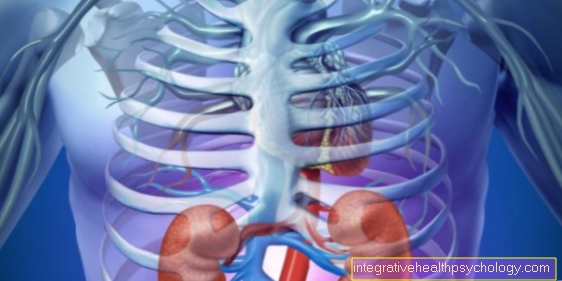


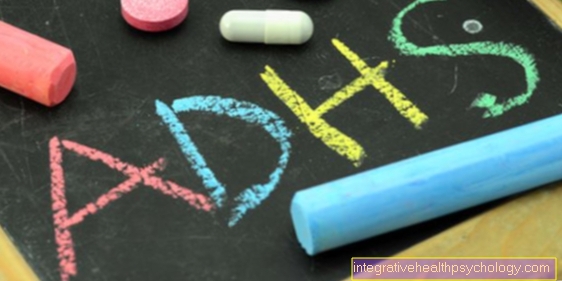
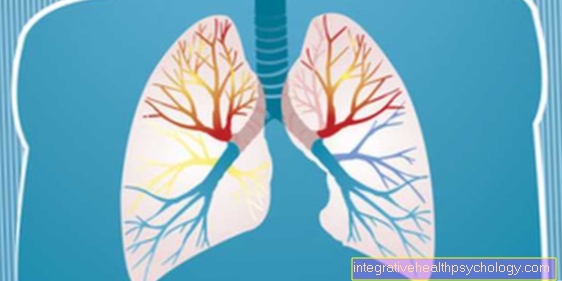
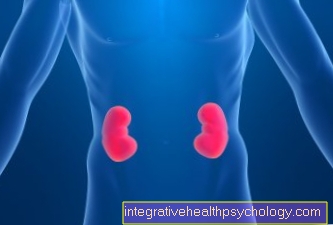
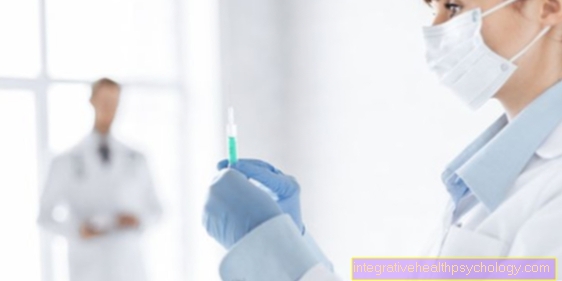
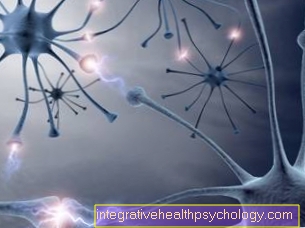




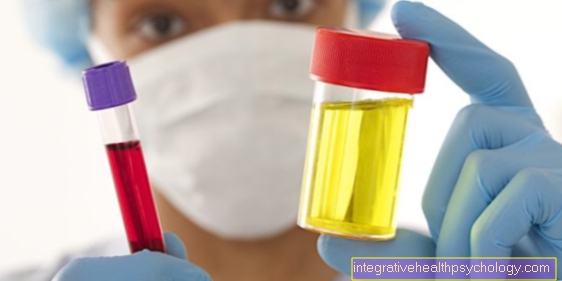

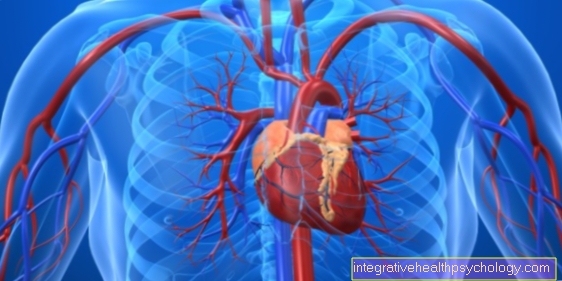
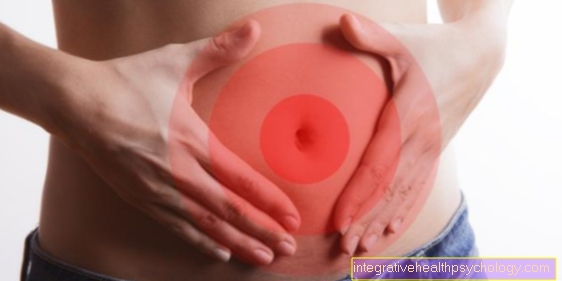
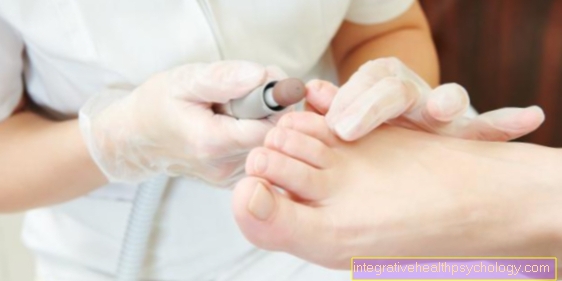
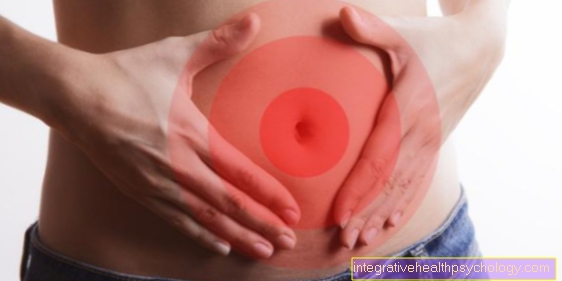

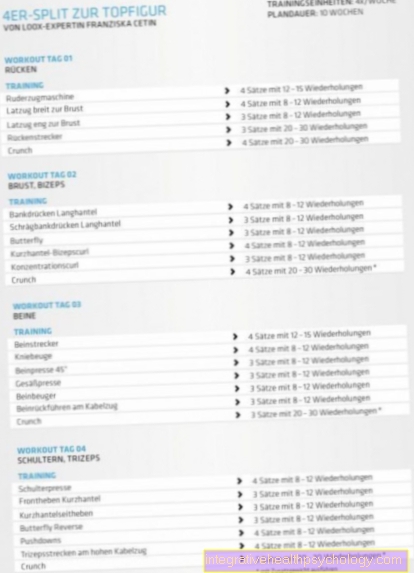


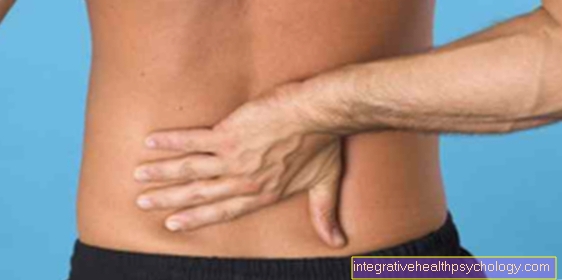


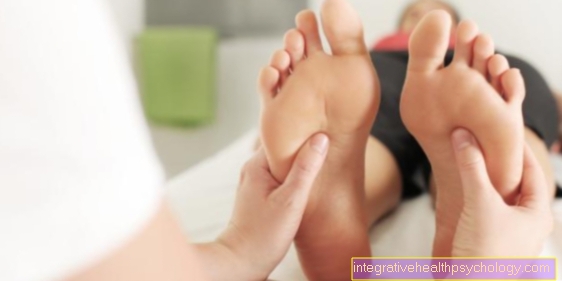
.jpg)
